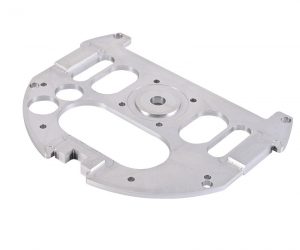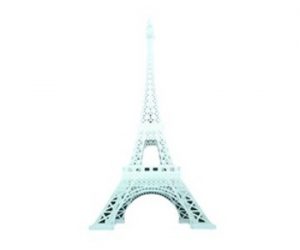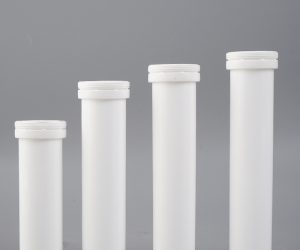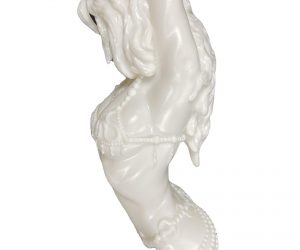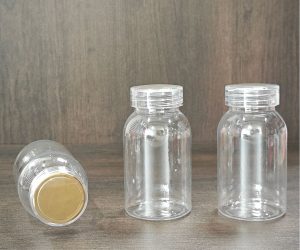1. Introduction
In the ever - evolving landscape of modern manufacturing, laser 3D printing has emerged as a revolutionary technology, heralding a new era of innovation. This innovative manufacturing process, also known as Laser Additive Manufacturing (LAM), has the potential to reshape industries, from aerospace and automotive to healthcare and consumer goods.
As Yigu Technology delve deeper into this article, we will explore the underlying technology of laser 3D printing, its diverse applications across different industries, the challenges it faces, and the future trends that are set to shape its development. By the end, you will have a comprehensive understanding of how laser 3D printing is revolutionizing the world of manufacturing.
2. Working Mechanism of Laser 3D Printing
2.1 Key Components and Their Functions
- Laser Source: The laser source is the heart of a laser 3D printer. It emits a highly focused and intense laser beam. Different types of lasers are used in 3D printing, such as fiber lasers, CO₂ lasers, and diode - pumped solid - state lasers. For Yigu Technology example, fiber lasers are popular in metal 3D printing due to their high efficiency, good beam quality, and high power output. They can reach powers ranging from a few watts to several kilowatts. The laser beam provides the energy required to melt or sinter the materials used in the 3D printing process. In selective laser sintering (SLS) of plastic powders, a laser beam with a power of around 10 - 100 watts is often sufficient to heat and fuse the powder particles together.
- Scanning System: The scanning system is responsible for precisely controlling the movement of the laser beam across the build area. It typically consists of galvanometric mirrors and a scanner controller. The galvanometric mirrors can rapidly deflect the laser beam in two - dimensional space, allowing for quick and accurate scanning of the desired patterns. For instance, in a high - speed laser 3D printer, the scanning system can move the laser beam at speeds of up to several meters per second, enabling fast layer - by - layer processing. The scanner controller receives commands from the printer's software, which contains the digital model information. It converts these commands into electrical signals that drive the galvanometric mirrors to move the laser beam in the correct path.
- Powder Bed: In powder - based laser 3D printing processes like SLS and selective laser melting (SLM), the powder bed is a crucial component. It is a flat platform on which a thin layer of powder material (such as metal, plastic, or ceramic powder) is evenly spread. The thickness of the powder layer is typically in the range of 20 - 100 micrometers, depending on the material and the desired resolution of the printed object. A recoater mechanism, which can be a blade or a roller, is used to spread the powder evenly across the powder bed for each new layer. For Yigu Technology example, in SLM of titanium alloy parts, a powder layer thickness of about 30 - 50 micrometers is commonly used to achieve high - quality and high - strength components.
- Resin slot (for Vat Photopolymerization): In vat photopolymerization processes such as stereolithography (SLA) and digital light processing (DLP), a resin tank is used. The tank is filled with a photosensitive resin, which is a liquid material that cures (hardens) when exposed to ultraviolet (UV) light. The laser beam (in SLA) or a pattern of light (in DLP) is projected onto the surface of the resin in the tank, curing the resin layer by layer to build the 3D object. The resin tank needs to be made of a material that is transparent to the UV light used in the process, such as certain types of plastics. The size of the resin tank determines the maximum build volume of the 3D printer in this type of process.
2.2 Step - by - Step Printing Process
- Model Design: The first step in laser 3D printing is creating a 3D digital model of the object to be printed. This is usually done using computer - aided design (CAD) software. Designers can create complex geometries from scratch or modify existing models. For example, in the automotive industry, engineers might design a new engine component with optimized internal cooling channels using CAD software. These channels can be designed in a way that would be impossible to manufacture with traditional machining methods. The CAD model can also be imported from other sources, such as 3D scanners, which are used to create digital replicas of existing objects.
- Slicing processing (Slicing): Once the 3D model is created, it needs to be sliced into thin cross - sectional layers. This is done using slicing software. The slicing software analyzes the 3D model and divides it into a series of 2D layers, typically with a thickness ranging from 0.05 - 0.3 mm, depending on the desired resolution of the final print. Each layer is then converted into a set of instructions that the 3D printer can understand. These instructions include information about the path the laser beam should follow to create the shape of the layer. For Yigu Technology example, if the layer has a circular shape, the slicing software will generate a path for the laser beam to trace the circumference of the circle.
- Laser sintering or curing molding (Laser Sintering or Curing):
- Powder - based Processes (e.g., SLS, SLM): In powder - based laser 3D printing, a thin layer of powder is first spread on the powder bed. The laser beam then scans the surface of the powder layer according to the instructions generated during the slicing process. When the laser beam hits the powder particles, it provides enough energy to heat and fuse them together. In SLS of nylon powder, the laser beam melts the powder particles at their contact points, creating a solidified layer. After the first layer is completed, the powder bed is lowered by the thickness of one layer (e.g., 0.05 mm), a new layer of powder is spread, and the process is repeated until the entire 3D object is built.
- Vat Photopolymerization Processes (e.g., SLA, DLP): In vat photopolymerization, the laser beam (in SLA) or a projected light pattern (in DLP) cures the liquid resin in the resin tank layer by layer. In SLA, a point - by - point scanning of the laser beam cures the resin according to the shape of the layer. In DLP, a digital micromirror device (DMD) is used to project an entire layer pattern onto the resin surface, curing the whole layer at once. For Yigu Technology example, in SLA printing of a dental crown model, the laser beam traces the shape of each layer of the crown in the photosensitive resin, gradually building up the 3D structure.
- Post - processing: After the 3D object is printed, it usually requires post - processing steps to achieve the final desired properties.
- Support Removal: If the printed object has overhangs or complex geometries, supports may have been printed during the process to prevent the object from collapsing. These supports need to be removed. In metal 3D printing, supports can be removed by mechanical means such as cutting or grinding. In resin - based 3D printing, supports can sometimes be easily broken off or dissolved in a suitable solvent.
- Sanding and Polishing: To improve the surface finish of the printed object, sanding and polishing may be necessary. Sanding can remove rough surfaces and small imperfections, while polishing can give the object a smooth and shiny appearance. For Yigu Technology example, a 3D - printed jewelry piece may be sanded and polished to make it look more appealing.
- Heat Treatment: In metal 3D printing, heat treatment is often used to improve the mechanical properties of the printed parts. Heat treatment can relieve internal stresses, improve hardness, and enhance the overall strength of the metal components. For instance, a 3D - printed titanium alloy aerospace component may be heat - treated to increase its fatigue resistance.
3. Comparison with Traditional Manufacturing Methods
3.1 Cost - effectiveness
Cost is a crucial factor when comparing laser 3D printing with traditional manufacturing methods. The following Yigu Technology table provides a detailed comparison:
| Comparison project | Traditional manufacturing methods | Laser 3D printing |
| Equipment cost | High. For example, in injection molding, a high - precision injection molding machine can cost hundreds of thousands to millions of dollars. Additionally, the cost of molds is also significant. A complex mold for automotive parts can cost tens of thousands to hundreds of thousands of dollars. | High. A high - end industrial laser 3D printer can cost from tens of thousands to hundreds of thousands of dollars. However, there is no need for expensive molds as in traditional manufacturing. |
| Material cost | Material costs vary depending on the material. In large - scale production, bulk purchasing of materials can lead to cost savings. For example, when manufacturing steel parts in large quantities, the unit cost of steel can be relatively low. | Material costs also vary by material type. Some 3D printing materials, such as certain high - performance metal powders, can be expensive. But in small - batch production, the amount of material used is less compared to traditional manufacturing, which may offset the high - cost of materials to some extent. |
| Labor cost | Generally requires more labor in processes like machining, assembly, etc. Skilled workers are needed for operating machinery and conducting quality control. Labor costs can be a significant portion of the total cost, especially in regions with high labor wages. | Requires less labor for operation. Once the digital model is prepared and the printer is set up, the printing process can be mostly automated. However, skilled technicians are needed for pre - processing (such as model design and slicing) and post - processing. |
| Cost of small-batch production | High for small - batch production. The high cost of equipment setup and the inability to fully utilize the production capacity lead to a high unit cost. For instance, if only a few dozen parts are produced using injection molding, the cost of mold making and machine setup will be spread over a small number of products, resulting in a high unit cost. | Low for small - batch production. Since there is no need for mold making and the process is more adaptable to small quantities, the unit cost is relatively lower. For example, producing 50 customized plastic parts using laser 3D printing can be more cost - effective than traditional injection molding. |
| Mass production cost | Low for large - scale production. As the production volume increases, the fixed costs (such as equipment and mold costs) are spread over more products, reducing the unit cost significantly. In the automotive industry, when producing hundreds of thousands of the same parts, the unit cost can be very low. | Currently, high for large - scale production. The relatively slow printing speed and high equipment and material costs make it less cost - effective in large - scale production compared to traditional methods. However, with the development of technology, this situation may change in the future. |
In general, laser 3D printing is more cost - effective in small - batch production and prototyping, while traditional manufacturing methods have an edge in large - scale production.
3.2 Design Freedom and Complexity
Traditional manufacturing methods often face limitations when it comes to complex designs. For Yigu Technology example, in subtractive manufacturing processes like machining, creating intricate internal structures or undercuts can be extremely difficult or even impossible. A study by a leading manufacturing research institute found that in traditional machining, only about 30% of complex design concepts can be successfully translated into physical products.
On the contrary, laser 3D printing excels in creating complex geometric shapes. It can easily produce parts with internal channels, lattice structures, and complex curvatures. In the aerospace industry, laser 3D printing is used to manufacture engine components with complex cooling channels. These channels are designed to optimize the cooling of the engine, improving its efficiency and performance. The complex geometries of these channels would be nearly impossible to achieve with traditional manufacturing methods. Another example is in the jewelry industry, where laser 3D printing allows for the creation of highly detailed and complex jewelry designs, such as pieces with intricate filigree patterns. These designs can be customized according to the customer's preferences, something that is challenging to achieve with traditional casting or stamping methods.
3.3 Production Efficiency
Production efficiency is another aspect where laser 3D printing and traditional manufacturing methods differ.
- Prototype production: In prototyping, laser 3D printing is much faster. It can turn a digital design into a physical prototype in a matter of hours or days. For example, a small - scale 3D printer can produce a simple plastic prototype within 24 hours. In contrast, traditional prototyping methods, such as creating a prototype through machining and assembly, can take weeks. This is because traditional methods often require multiple steps, including creating molds, machining parts, and then assembling them.
- Small-batch production: For small - batch production (e.g., producing 10 - 1000 units), laser 3D printing also has an advantage. It can start production immediately after the digital model is ready, without the need for time - consuming mold making or setup processes as in traditional manufacturing. A case study in the electronics industry showed that when producing 500 customized circuit board holders, laser 3D printing completed the production in 5 days, while traditional injection molding took 15 days due to the time required for mold design, fabrication, and testing.
- Mass production: However, in large - scale production (producing thousands or more units), traditional manufacturing methods are more efficient. High - speed production lines in traditional manufacturing can churn out products at a much faster rate. For example, a traditional automotive production line can produce hundreds of cars per day, while current laser 3D printing technology would take a long time to reach the same production volume due to its relatively slow layer - by - layer building process.
3.4 Material Utilization
Traditional manufacturing methods often result in significant material waste. In subtractive manufacturing, large amounts of material are removed from a larger block or sheet to create the desired shape. For example, in machining a metal part, up to 80% of the original material may be wasted as chips. In the furniture manufacturing industry, when cutting wooden parts from large planks, a substantial amount of wood is discarded due to the need to cut around irregularities in the wood and to achieve the required shapes.
Yigu Technology Laser 3D printing, on the other hand, is an additive manufacturing process. It builds objects layer by layer, using only the amount of material required for the final product. This significantly reduces material waste. In a study comparing the production of a complex metal component, traditional machining had a material utilization rate of only 20%, while laser 3D printing achieved a material utilization rate of over 90%. This not only saves material costs but also has environmental benefits by reducing the amount of waste that needs to be disposed of.
4. Applications in Diverse Manufacturing Sectors
4.1 Aerospace Industry
The aerospace industry has been one of the early adopters of laser 3D printing technology, and its applications have been transformative. One of the most significant areas of application is in the manufacturing of aircraft engine components. For example, General Electric (GE) has been using laser 3D printing to produce fuel nozzles for its LEAP engines. These fuel nozzles are complex components with intricate internal channels that are designed to optimize fuel combustion. Traditional manufacturing methods would struggle to create such complex geometries, but laser 3D printing enables the production of these nozzles with high precision.
Another example is in the manufacturing of aircraft structural components. Airbus has been exploring the use of 3D - printed titanium alloy parts for its aircraft. These parts, such as brackets and fittings, can be designed with lattice structures using laser 3D printing. Lattice structures are lightweight yet strong, and they can significantly reduce the weight of the aircraft. According to Airbus, using 3D - printed lattice - structured parts can lead to a weight reduction of up to 50% compared to traditional parts. This weight reduction is crucial in the aerospace industry as it directly translates to reduced fuel consumption and lower emissions. For every kilogram of weight reduction in an aircraft, it can save up to 3,500 liters of fuel over its lifespan.
Moreover, laser 3D printing allows for the production of complex parts in a single piece, eliminating the need for multiple components to be assembled. This not only reduces the manufacturing time but also improves the structural integrity of the parts. In the past, complex engine components might have required the assembly of dozens of individual parts, which increased the risk of failure due to weak joints. With 3D printing, these components can be produced as a single, monolithic part, enhancing their reliability.
4.2 Automotive Industry
In the automotive industry, laser 3D printing has found applications in several key areas. One of the primary uses is in automotive prototype manufacturing. Car manufacturers can quickly produce physical prototypes of new car parts using laser 3D printing. For instance, Ford has a rapid technology center in Germany where they use various 3D printing technologies, including laser - based ones, to create prototypes. Designers can have their design concepts turned into physical models in just a few hours, compared to the weeks it would take using traditional prototyping methods. This allows for faster design iterations and reduces the time it takes to bring a new car model to market.
Customized automotive component production is another area where laser 3D printing shines. Some high - end car manufacturers are using 3D printing to create customized interior components for their customers. For Yigu Technology example, a customer might want a unique dashboard design or personalized door handles. Laser 3D printing enables the production of these customized components without the need for expensive tooling. A study by a leading automotive research firm found that 3D - printed customized components can increase customer satisfaction by up to 20% as they offer a unique and personalized touch to the vehicle.
Lightweight design is also a significant advantage of laser 3D printing in the automotive industry. By using 3D - printed lattice - structured parts, car manufacturers can reduce the weight of the vehicle, which in turn improves fuel efficiency. For example, IGESTEK, a Spanish automotive supplier, has been working on using 3D - printed parts in combination with lightweight composites to create a more fuel - efficient vehicle. Their research has shown that by using 3D - printed lightweight components, they can achieve a fuel efficiency improvement of up to 15% in some vehicle models.

